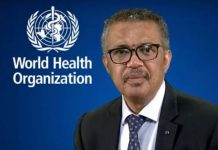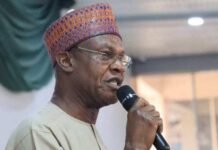The United Nations Educational, Scientific and Cultural Organisation (UNESCO) has said in its latest global data report that Nigeria now plays host to 20 million out-of-school children.
The UN agency disclosed this in a report published online by the UNESCO Institute for Statistics (UIS) and the Global Education Monitoring (GEM)
It stated that there are 244 million children and youth between the ages of six and 18 worldwide who are still out of school.
It also said the team developing the report “has the official mandate of monitoring progress in meeting the Sustainable Development Goal on education, SDG 4.”
“The top three countries with the most children and youth excluded from education are India, Nigeria and Pakistan,” the report stated.
It further said sub-Saharan Africa remains the region with the most children and youth out of school with 98 million children and young people excluded from education.
The UN agency listed the countries in the category to include Nigeria which has an estimated 20 million children and youth out of school; Ethiopia, 10.5 million;, the Democratic Republic of Congo, 5.9 million; and Kenya 1.8 million.
“The new estimates, published online by the UNESCO Institute for Statistics (UIS) and the Global Education Monitoring (GEM) Report, show that sub-Saharan Africa remains the region with the most children and youth out of school with 98 million children and young people excluded from education.
“It is also the only region where this number is increasing; out-of-school rates are falling more slowly than the rate at which the school-age population is growing.”
The report further said the region with the second highest out-of-school population is Central and Southern Asia with 85 million.
The director of UIS, Silvia Montoya, explained that efficient use of the available data is important to address the gaps towards achieving the fourth goal of the SDGs.
“UNESCO has long underscored the need to make more efficient use of the data we have. That’s why we’ve brought together administrative data with information from surveys and censuses.
“By using multiple data sources, gaps are filled, data trends are smoothed, and we can draw consistent time series.”
UNESCO’s assistant director general for education, Stefania Giannini, also said: “Global out-of-school numbers are lower than we thought, but far too many children are still missing out. Countries have committed to benchmarks to slash out-of-school numbers by over half by 2030.
“We must identify solutions during the Transforming Education Summit called by the United Nations Secretary general this September so that countries can deliver on these pledges. All children should have access to quality education.”
UNESCO said important data gaps have been filled in countries with large out-of-school numbers “but where no administrative data of good quality has been available for over a decade.”




























































